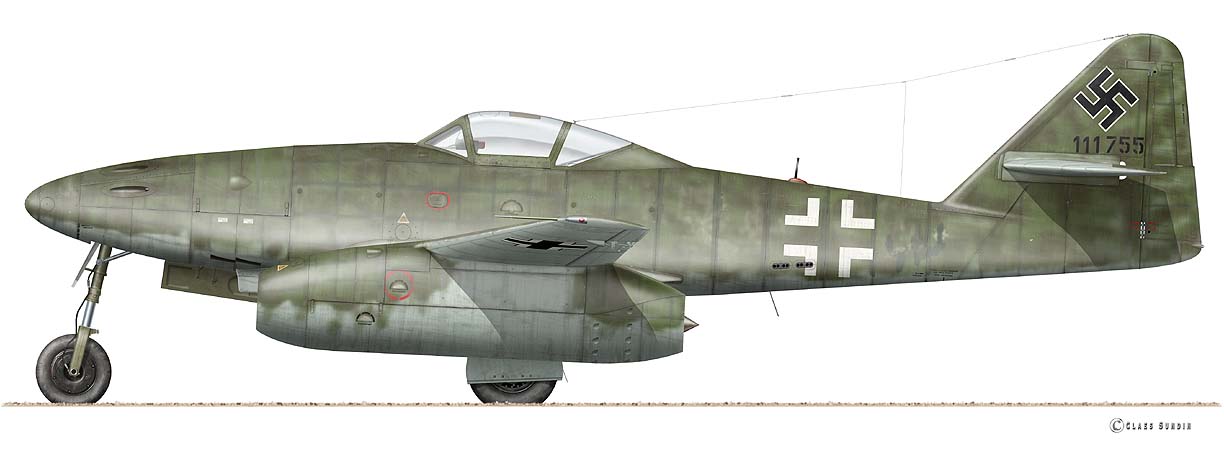


|
The Allied day and night bombing campaign against German industrial targets and cities became increasingly effective from mid-1943 onwards. The German's response was first to decentralize aircraft and component construction, and in mid-1944 concentrate aircraft production exclusively on day and night fighters. The "Notjägerprogramm" (emergency fighter program) demanded that large numbers of fighter planes were to be built quickly and by any means necessary at the expense of all other aircraft types whose production was terminated by the late summer on 1944. The Me 262 Turbinjäger was one of the "Wunderwaffe" (wonder weapons) intended to bring about a turnaround in the war. Following the Allied bombers targeting of Messerschmitt's Augsburg manufacturing complex, aircraft production was increasingly outsourced from mid-1943 onwards. When the Leipheim air base and Me 262 facilities were bombed on 1 April 1944, dispersal of production sites and dissemination of production of parts and components throughout the Reich was accelerated that included the creation of forest factories or "Waldwerke". One of these was Messerschmitt's Kuno AG Werk I final assembly facility Kuno I" located near Burgau. It was built in the thickly forested Scheppach Forst and hidden under camouflage nets strung from trees. The site was adjacent to an approximately 2000 metre long straight stretch of the München-Augsburg autobahn between kilometers 80 and 82. Here the centerline separation between the lanes was paved over and painted green so completed and tested Me 262 aircraft could be flown to operational units. Kuno I comprised a heated tent covering the assembly line, a firing range and engine test-run stations. Workers were housed in wooden barracks, and there was also a canteen and storage barracks. The workers were Jews taken from concentration camps and other "untermensch" forced laborers including political opponents of the Nazi regime, all closely guarded by 31 SS guards from the Dachau concentration camp. Punishments were frequent and cruel, often ending with death, with a female guard known to beat workers with a cudgel. It is not clear exactly how many Me 262 machines had been completed at Kuno I. However, the memories of Werner Krebs, who was briefly in the plant as a young mechanic in 1945, give an indication of the scale of production: "When we had to leave Burgau because of the approaching US Army, about 30 to 40 Me 262s were completed and loaded with ammunition ready to take off, however they had been left behind in the forest due to lack of fuel". This Me 262 A-1a was
captured intact inside one of the storage halls. It was dragged
outside and extensively photographed by US troops with two of
these images in colour. They confirm the 81/82 camouflage scheme
for this aircraft and thus other Me 262s in the 111737 to 111811
Werknummer series. This machine was apparently completed in early
April 1945. For some reason, perhaps due to construction defects,
it was not sent immediately to an operational unit, but fitted
with bomb racks to convert it to a fighter-bomber (Jabo). Here
it was discovered in late April 1945 essentially intact. |
|
|
|
|
|
|